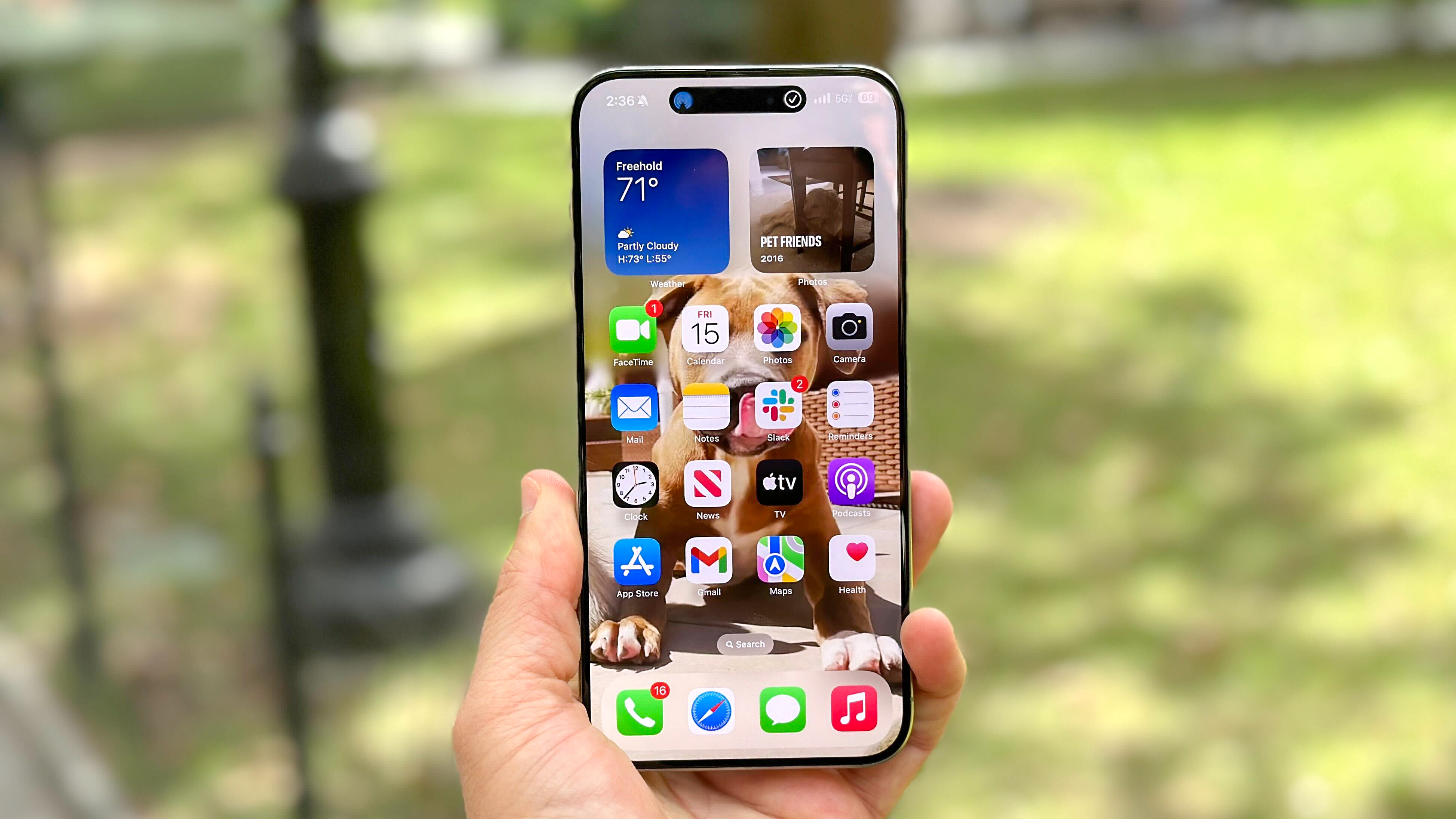The best gaming monitors in 2025 — tested and rated
Looking for 4K displays and 240Hz refresh rates? Check out the best gaming monitors
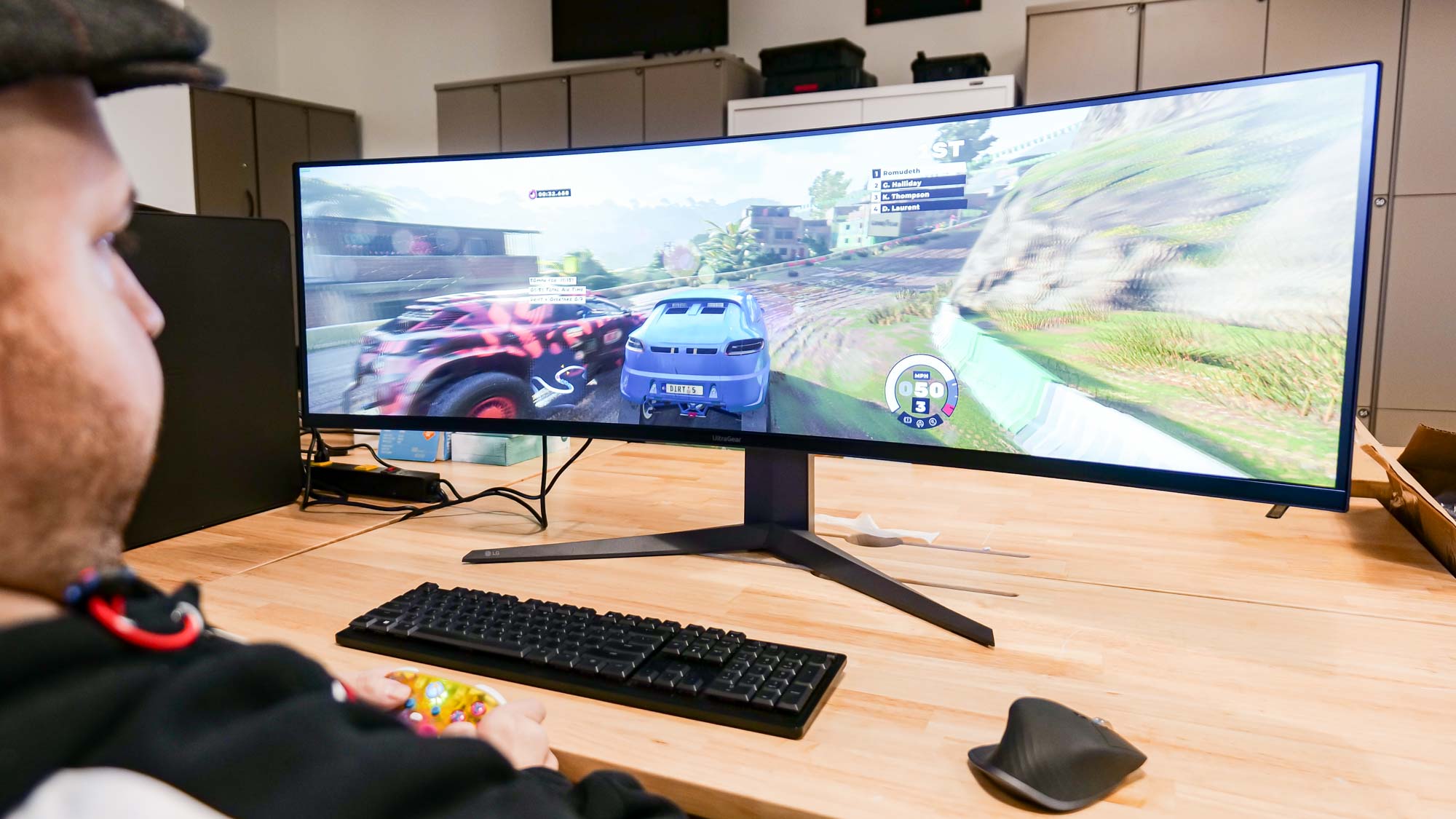
When it comes to gaming, I want to make the most of my console and PC's power, and the best gaming monitors do just the trick. With high resolutions, super-smooth refresh rates and incredible detail on display, these monitors are a visual treat for the eyes.
Luckily, there are plenty of monitors (with often confusing names, I know) to choose from, varying in budgets, sizes, resolution, refresh rates — the list goes on. Our team of monitor experts and I have pinned down a wide range of them, and having tested dozens of screens, we have a good idea about what makes a monitor shine for your gaming setup.
For most gamers, I recommend the LG UltraGear 45GR75DC. It's feature-rich and produces lovely images, but that 45-inch ultrawide size means you'll need a fairly large desk. As for our latest pick, we got our hands on the Sony Inzone M9 II it's a stellar 27-inch monitor that will pair perfectly with a PS5 or PC — all for a great price.
Whether you need a top-of-the-line display or are looking for something more budget-friendly, our list of the best gaming monitors will satisfy your needs.
The quick list
The best gaming monitors you can buy today
Why you can trust Tom's Guide
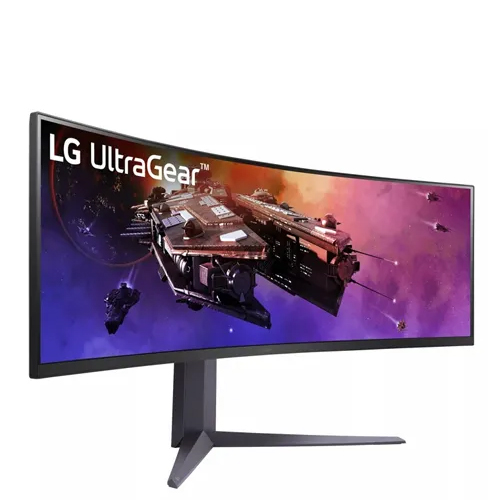
A big and brilliant gaming monitor that boasts super-speedy, performance, sharp and vivid 3.5K resolution and 1500R curvature that really draws you in. This is the ultimate display for both playing games and working on.
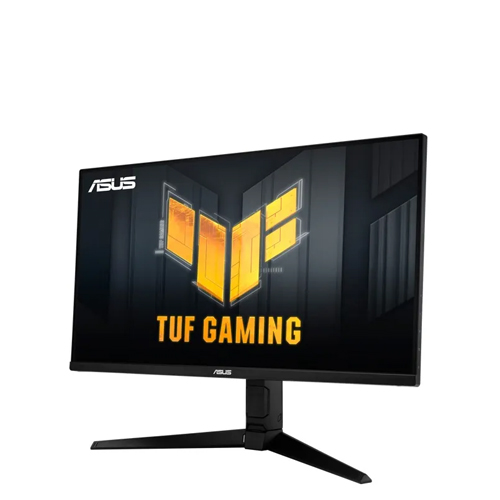
The best budget gaming monitor on the block works great paired either with a PC or current-gen console thanks to its duo of HDMI 2.1 ports. The 144Hz refresh rate also ensures your favorite titles will feel very responsive.
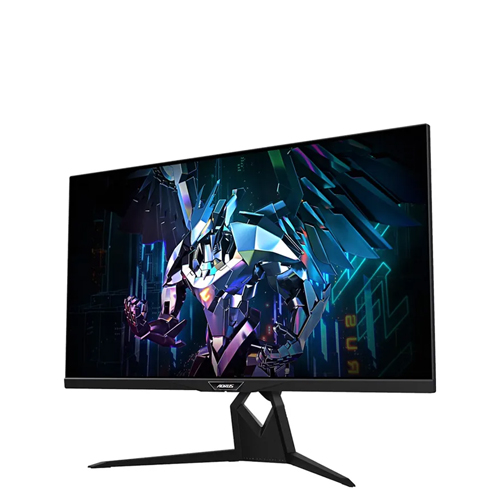
A feature-rich display that's our current pick as the best 4K gaming monitor on the market. Not only is picture quality superb, the Aorus also has adaptive sync to help smooth frame rates during gameplay.
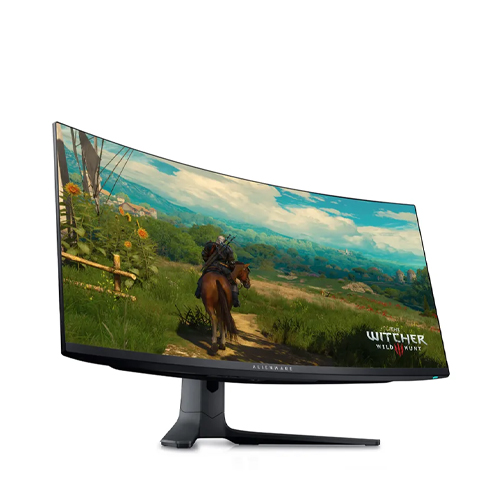
An excellent curved monitor that boasts the supreme quailty you'd expect from the Alienware range. Black levels are predictably perfect, while few PC displays look quite this vibrant when showing HDR content.
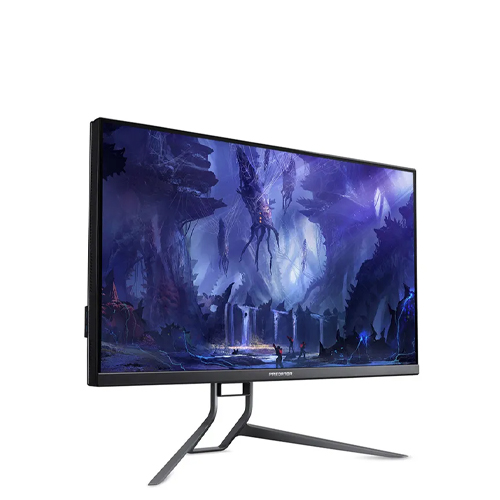
Gaming monitors are often expensive, so when you come across a good one that's as aggressively priced as the Acer Predator XB3223QK, you should give some serious thought about buying this bright display.
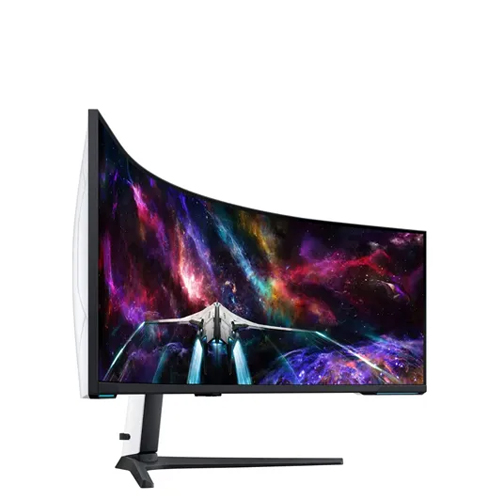
If you're lucky to own a desk the size of your average soccer field, the colossal 57-inch Samsung Odyssey Neo G9 is the ultrawide monitor for you. With a 240Hz refresh rate and accurate colors, big truly is beautiful.
Click to view more products
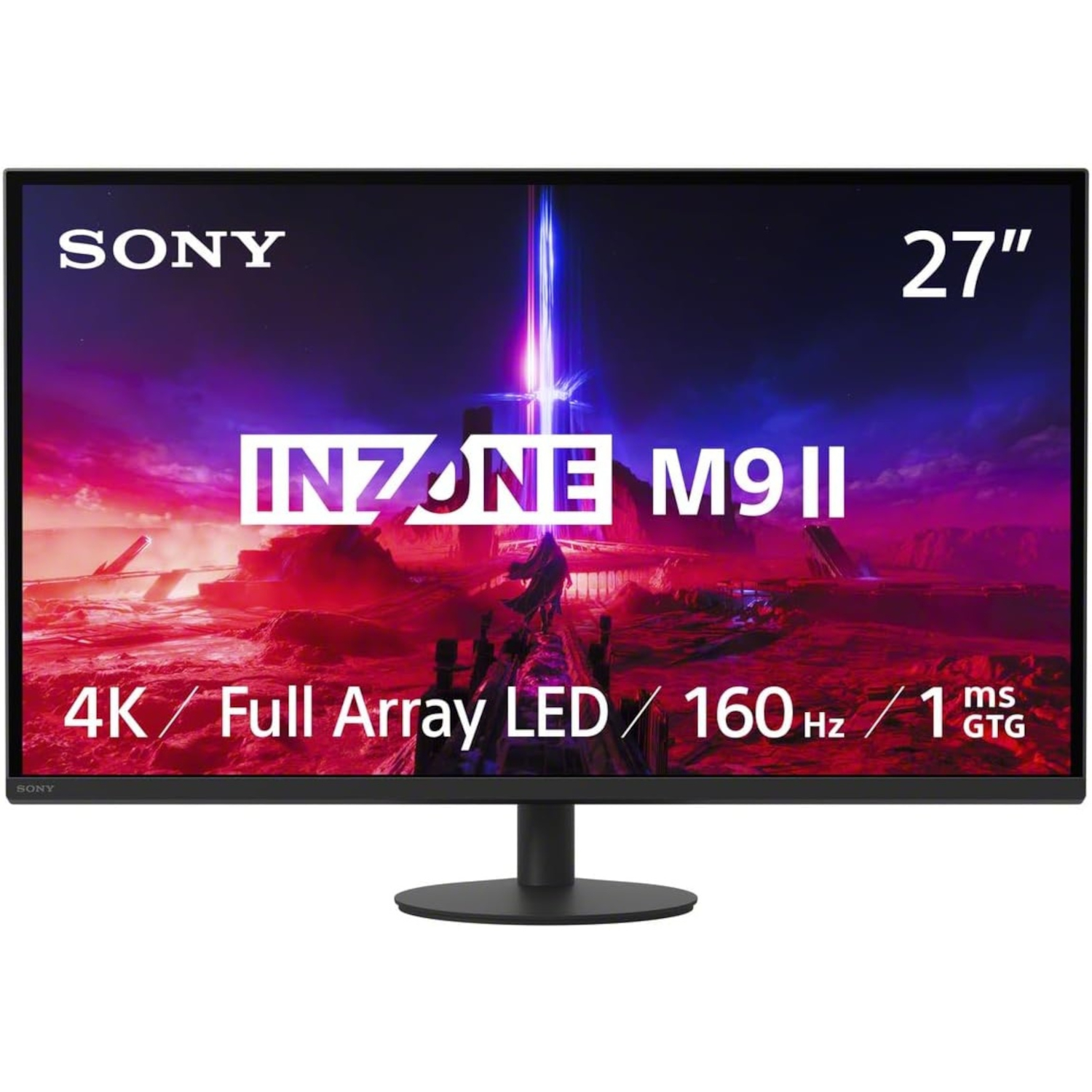
The Sony Inzone M9 II is an excellent 27-inch 4K monitor for console and PC gaming. Thanks to the sleeker design and higher 160Hz refresh rate, it’s a marked improvement over its predecessor. It’s one of the best gaming monitors for under $1,000/£1,000.

If you're an aspiring pro gamer and you have a real need for speed, the Odyssey OLED G9 is the 240Hz monitor we'd currently choose or any other. Its 49-inch form factor is quite the sight to behold, too.
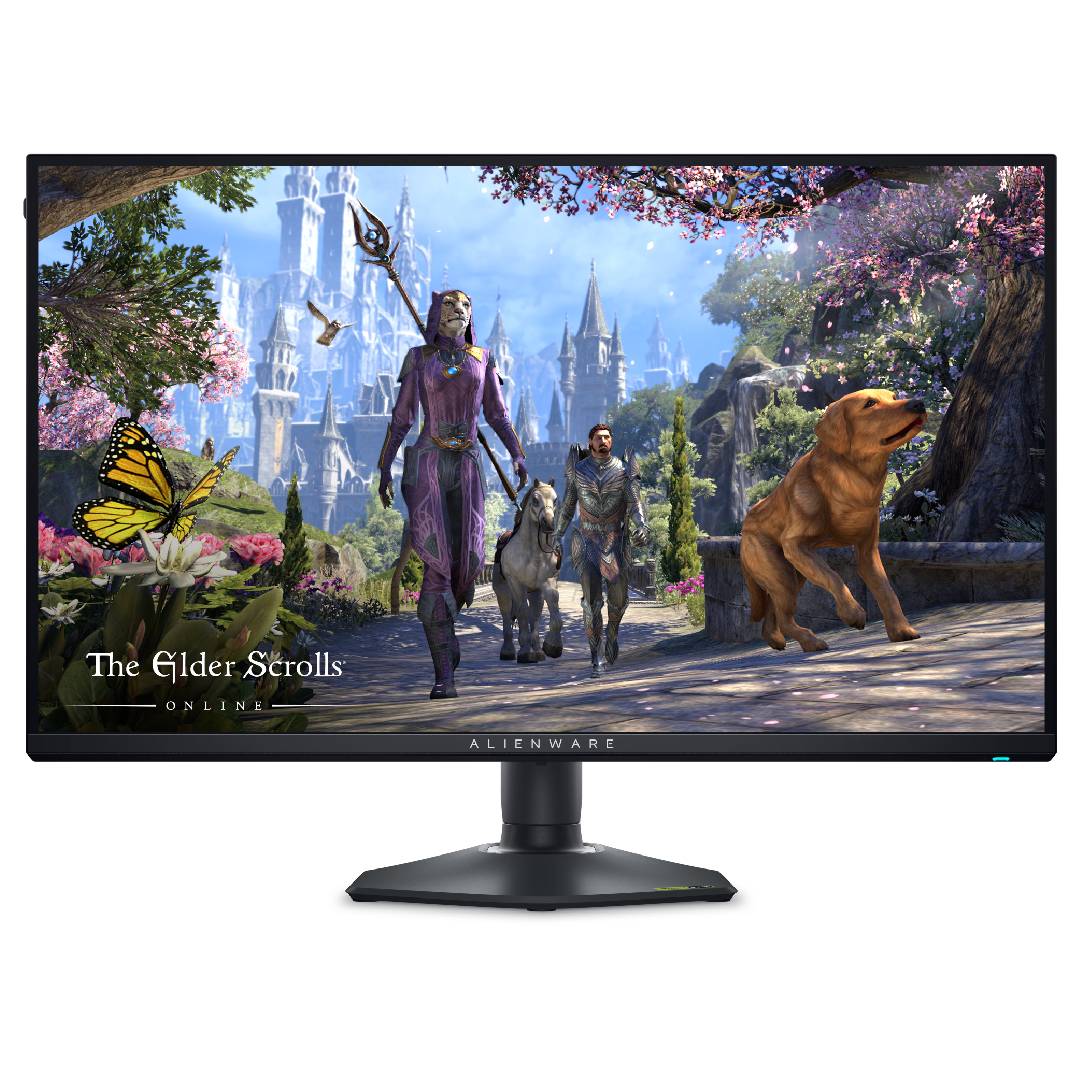
This 27-inch gaming monitor can flip between 1080p 360Hz and 4K 180Hz at the press of a button, making it great for esports enthusiasts who want to drop down to 1080p for maximum frames per second. There are better options out there, but this model does a great job at a very affordable price.

As I cover all things computing for Tom's Guide, I'm always on the hunt for a monitor that can make my favorite games shine on my PC or console. From checking color gamut coverage and the screen's response time to simply seeing if a game looks great on display, my team and I put these monitors through their paces. If a gaming monitor ticks the right boxes and comes at the right price, it deserves your attention.
The best gaming monitors you can buy today
The best overall gaming monitor
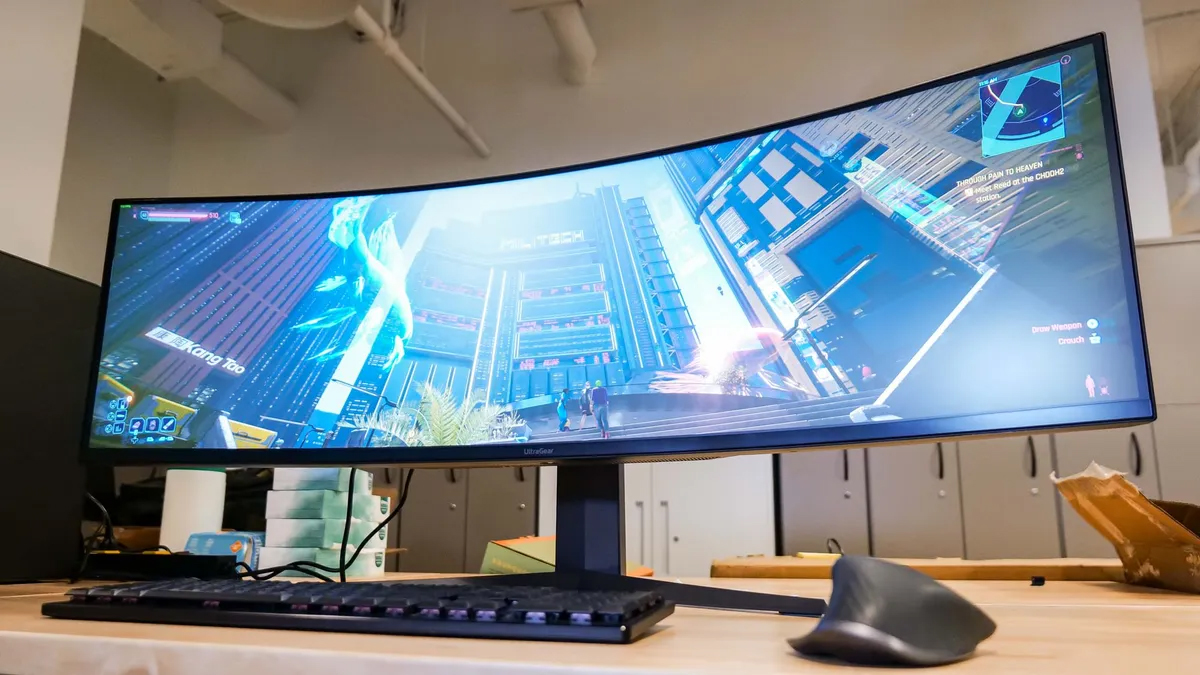
Specifications
Reasons to buy
Reasons to avoid
There might be gaming monitors on this list that boast more impressive displays and faster refresh rates, but when it comes down to pure bang for your buck, the LG Ultragear 45GR75DC is the easiest gaming monitor to recommend for most people. That’s because it’s packed with gaming-friendly features and LG have somehow managed to price this brilliant display for less than $800.
This fabulous LG monitor ticks off just about every box you could want from a modern PC gaming display; be it for work or play. The only semi-significant caveat? At 45-inches, you’re gonna need a bigger boa… sorry, desk, to accommodate this grand, gorgeous panel. With a resolution of 5,120 x 1,400 pixels, this 32:9 super ultrawide can make the best PC games look so much more immersive.
Add in that 1500R curvature and that ultra-speedy 200Hz refresh rate, and there are few other gaming monitors out there on the market that produce such quality images at almost a peerlessly aggressive price point.
Read our full LG UltraGear 45GR75C review.
The best budget gaming monitor
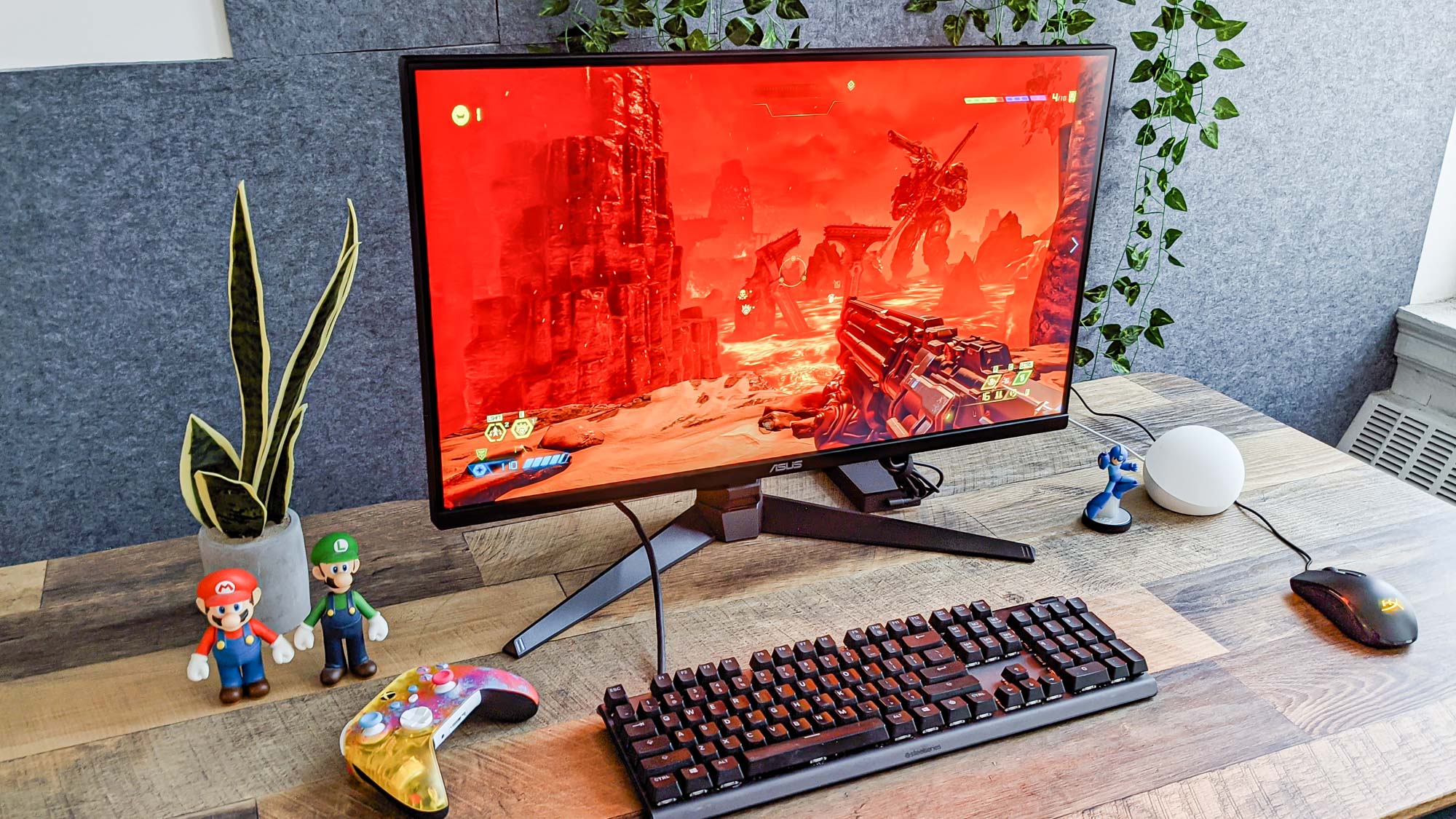
Specifications
Reasons to buy
Reasons to avoid
Calling the Asus TUF Gaming VG28UQL1A a "budget' monitor" at its mid-range price (depending on sales) might sound strange. Yet in our book, a top-tier 4K monitor with a 144Hz refresh rate and two HDMI 2.1 ports is damn good value for money.
Apart from its reasonable price, the VG28UQL1A is simply a gorgeous unit, with some of the richest and most accurate colors of any gaming display we've tested. The screen's HDR capabilities are almost unmatched, especially the way it handles reds, oranges and pinks. This panel even boasts good speakers, which not many gaming monitors can claim.
Read our full Asus TUF Gaming VG28UQL1A review.
The best 4K gaming monitor

Specifications
Reasons to buy
Reasons to avoid
The Gigabyte Aorus FI32U delivers a fairly big picture and the performance you need for playing the best PS5 games. At $1,000, it’s a pretty expensive gaming monitor, and yet it’s still a bit cheaper than some 32-inch displays from fancier brands. While the FI32U doesn’t have built-in speakers, it does have excellent picture quality, a unique design and the ability to rotate into a vertical configuration. It also has plenty of ports and an easy-to-navigate menu system.
Just about every preset works well, whether you’re playing in standard or HDR modes. The monitor also offers some handy gaming features, including picture-in-picture settings and adaptive sync for smoother frame rates. While the FI32U isn’t exactly a budget PS5 monitor, it still offers more features than you might expect for the price.
Read our full Gigabyte Aorus FI32U review.
The best ultrawide gaming monitor

Specifications
Reasons to buy
Reasons to avoid
The Alienware AW3423DWF QD-OLED is basically the same stellar monitor as its AW3423DW cousin, except it goes down the FreeSync route rather than supporting Nvidia’s G-Sync frame rate-smoothing tech. The main improvement over its close cousin? The addition of HDMI 2.1 support, making it an ideal choice if you want to pair this display with a PS5 or Xbox Series X. It may only be an overall minor upgrade, yet the improvements make it the monitor to go for over its Dell sibling.
HDMI 2.1 support is obviously welcome, but it’s not a deal-breaker if you only play the best Steam games, where you should hook this classy monitor up to your rig via its DisplayPort connection. Regardless, this is a stellar HDR performer, screen uniformity is practically perfect and you can normally easily pick it up for under $1,000/£1,000.
Read our full Alienware AW3423DWF QD-OLED review.
The best value gaming monitor
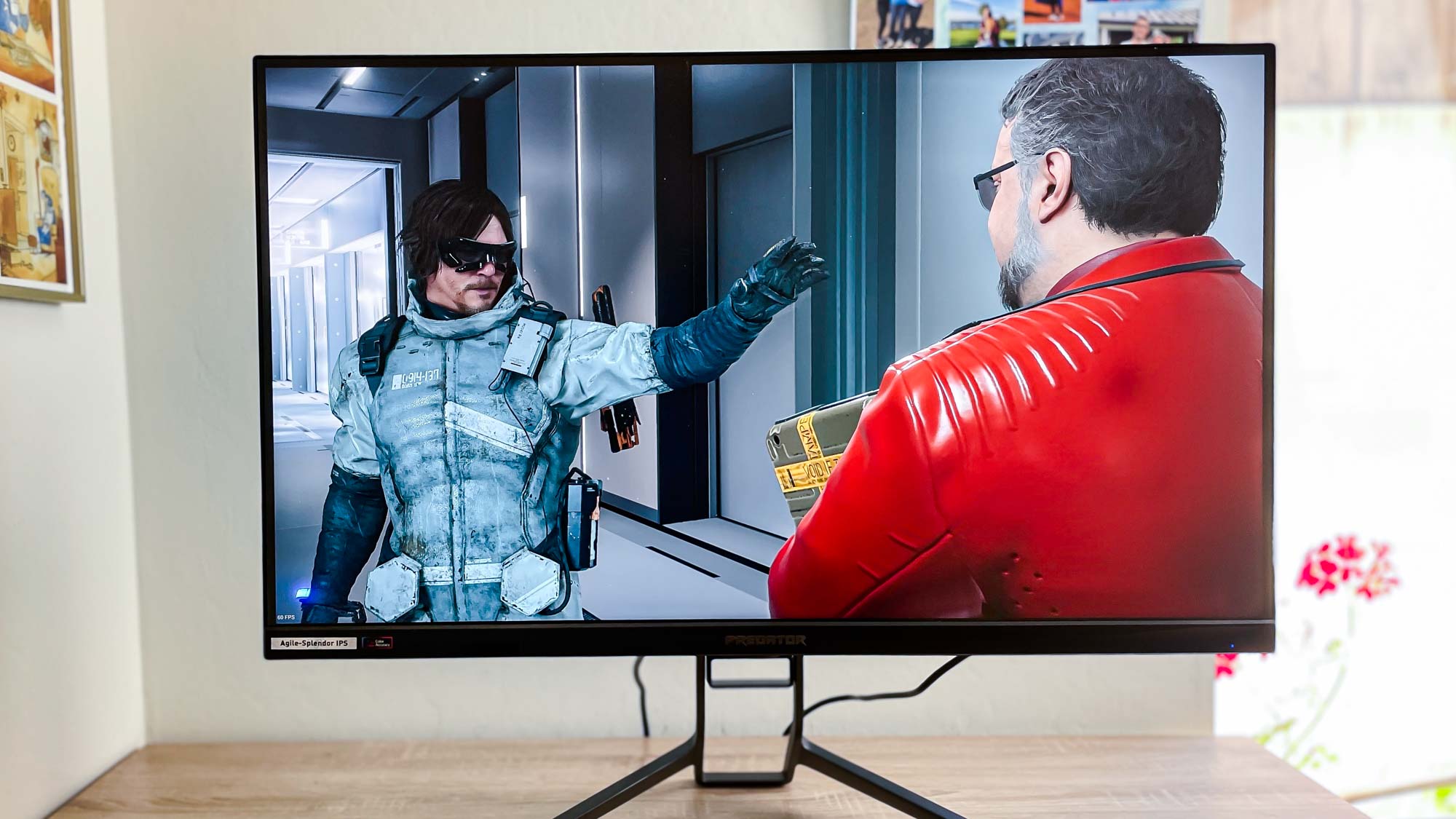
Specifications
Reasons to buy
Reasons to avoid
The Acer Predator XB323QK is a great 32-inch 4K gaming monitor that also supports Xbox Series X and PlayStation 5. If you can afford it, this 144Hz display is well-suited for work and play, though having most of the ports located on the bottom lip makes swapping out consoles or cables a real pain in the neck.
This big, beautiful display also comes with some neat features, like a customizable LED backlight and a slew of modes and display options you can use to finetune the performance when playing your favorite games. There are even a pair of built-in speakers, though the tinny sound quality will motivate you to invest in a pair of headphones or the best computer speakers.
Read our full Acer Predator XB323QK review.
The best curved gaming monitor

Specifications
Reasons to buy
Reasons to avoid
A 57-inch marvel, and for our money the best mini-LED gaming monitor you can currently purchase. Samsung's display makes most of the other monitors on this list look practically teeny by comparison. While its mighty form factor is the standout feature, the Neo G9 serves up quality gaming features across the board that have nothing to do with size.
The immersive 1,000R curved display 7,680 x 2,160 resolution, silky smooth 240Hz refresh rate and lightning 1ms response time provide sensational gaming sessions. If you're a multitasker, all that extra screen real estate can also help you maximize productivity.
The Samsung Odyssey Neo G9 has dropped a lot in price since it initially launched at $2,499 asking price, so the fact you can now buy it for around $1,350 makes this mammoth gaming monitor even easier to recommend.
Read our full Samsung Odyssey Neo G9 review.
The best PS5 gaming monitor
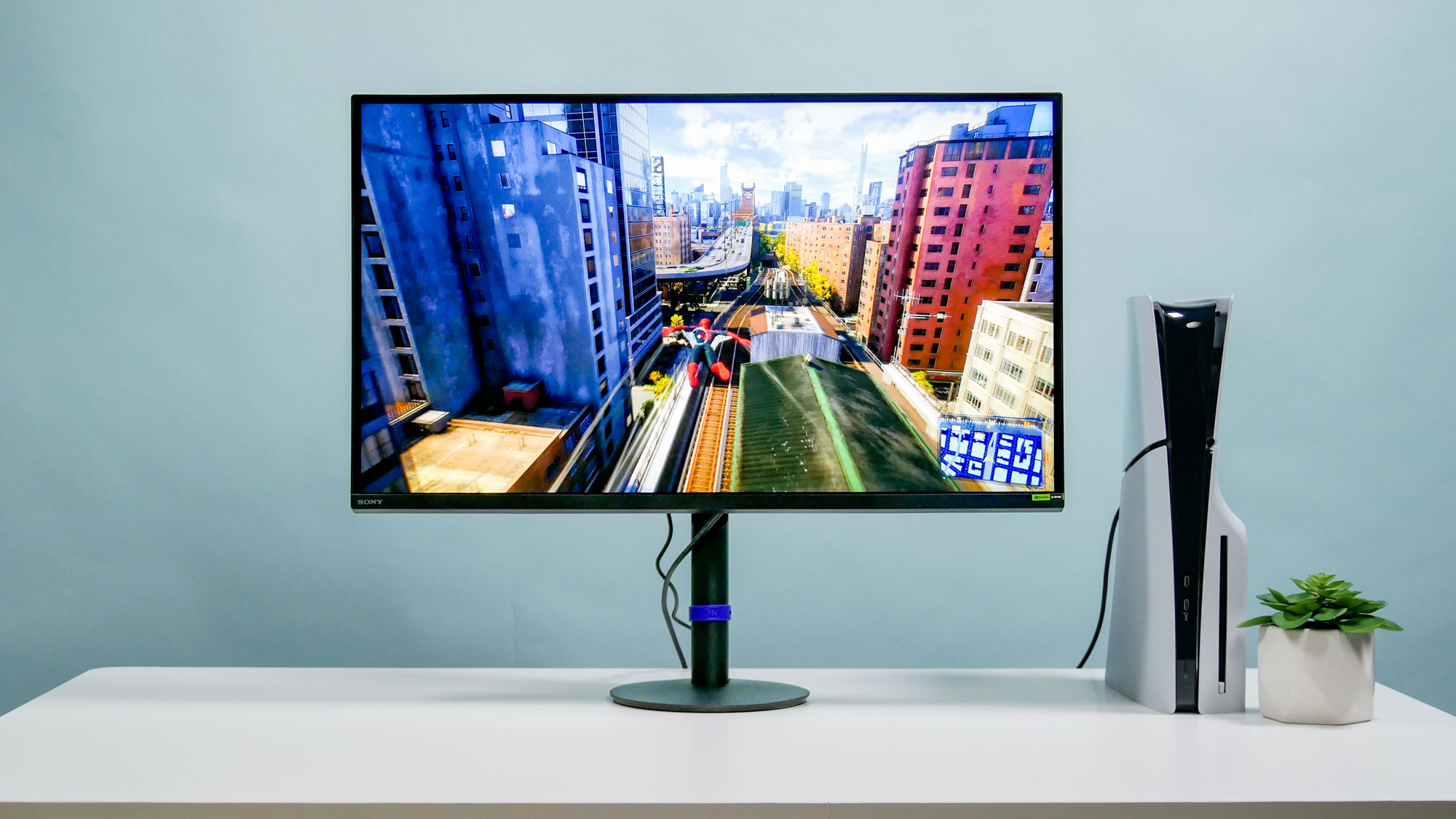
Specifications
Reasons to buy
Reasons to avoid
The Sony Inzone M9 II gaming monitor is a fantastic device for both PC and PS5 games. At $799, this striking 27-inch 4K 160Hz gaming monitor is a great buy for anyone who plays games on PC or PlayStation 5. If you happen to do both and want to do them on the same display, the M9 II is for you.
Aside from a higher refresh rate, the Inzone M9 II sports an updated design that takes up less space on a desk. Though the all-black design might not be as striking, we think it's wise that Sony ditched the tripod-style stand with a generic stand that sits above a low-profile circular base. This new design better suits all gaming setups instead of just PlayStation.
While the Inzone M9 II is undeniably great, it has some drawbacks. The main one is that there is no OLED option to complement the sharp 4K resolution. And though we appreciate the inclusion of built-in speakers, the overall quality, while better than the previous model, won't impress your ears.
Nitpicks aside, you can't go wrong with the Sony Inzone M9 II, whether you own a PS5 or a gaming rig.
Read our full Sony Inzone M9 II review.
The best 240Hz gaming monitor
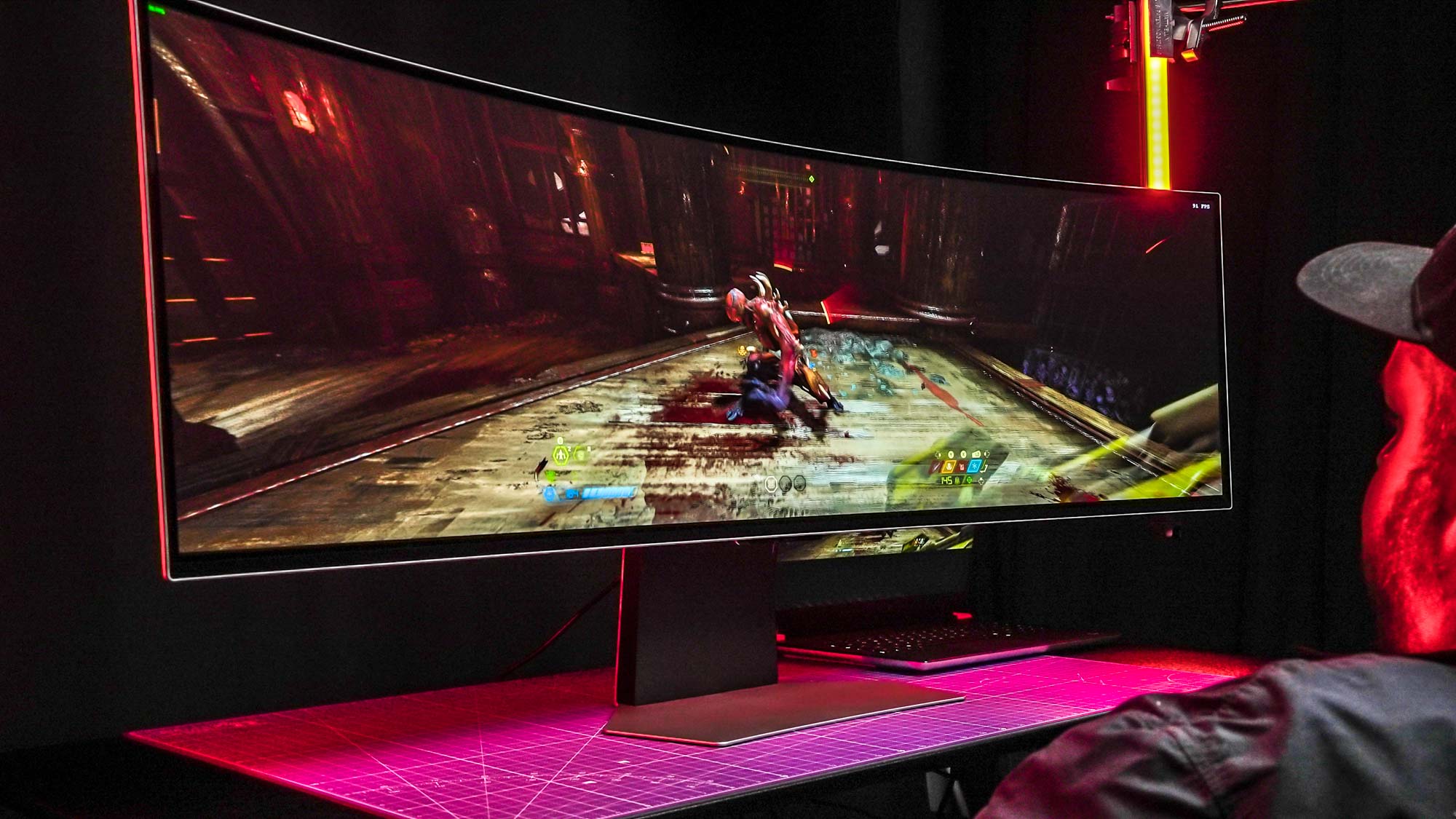
Specifications
Reasons to buy
Reasons to avoid
“Truly immersive gaming.” That’s how we succinctly summed up the Samsung Odyssey OLED G9 in our review. The first-ever 49-inch OLED gaming monitor to hit the market, this is one of the most immersive displays your eyes will ever be blessed to witness. Normally retailing for a shade under $1,400, this is hands-down the best 240Hz gaming monitor out there, purely thanks to its 32:9 aspect ratio and its stunning OLED display.
The Odyssey OLED G9’s specs are pretty stunning. A Flash quick 0.03ms response time and 240Hz refresh rate make it a terrific option for fans of buttery-smooth first-person shooters like Doom Eternal. And perhaps the best aspect of this gargantuan gaming monitor. There are few OLED displays out there that prove quite so resistant to the tech’s dreaded burn-in.
See our full Samsung Odyssey OLED G9 review.
The best budget dual-resolution gaming monitor
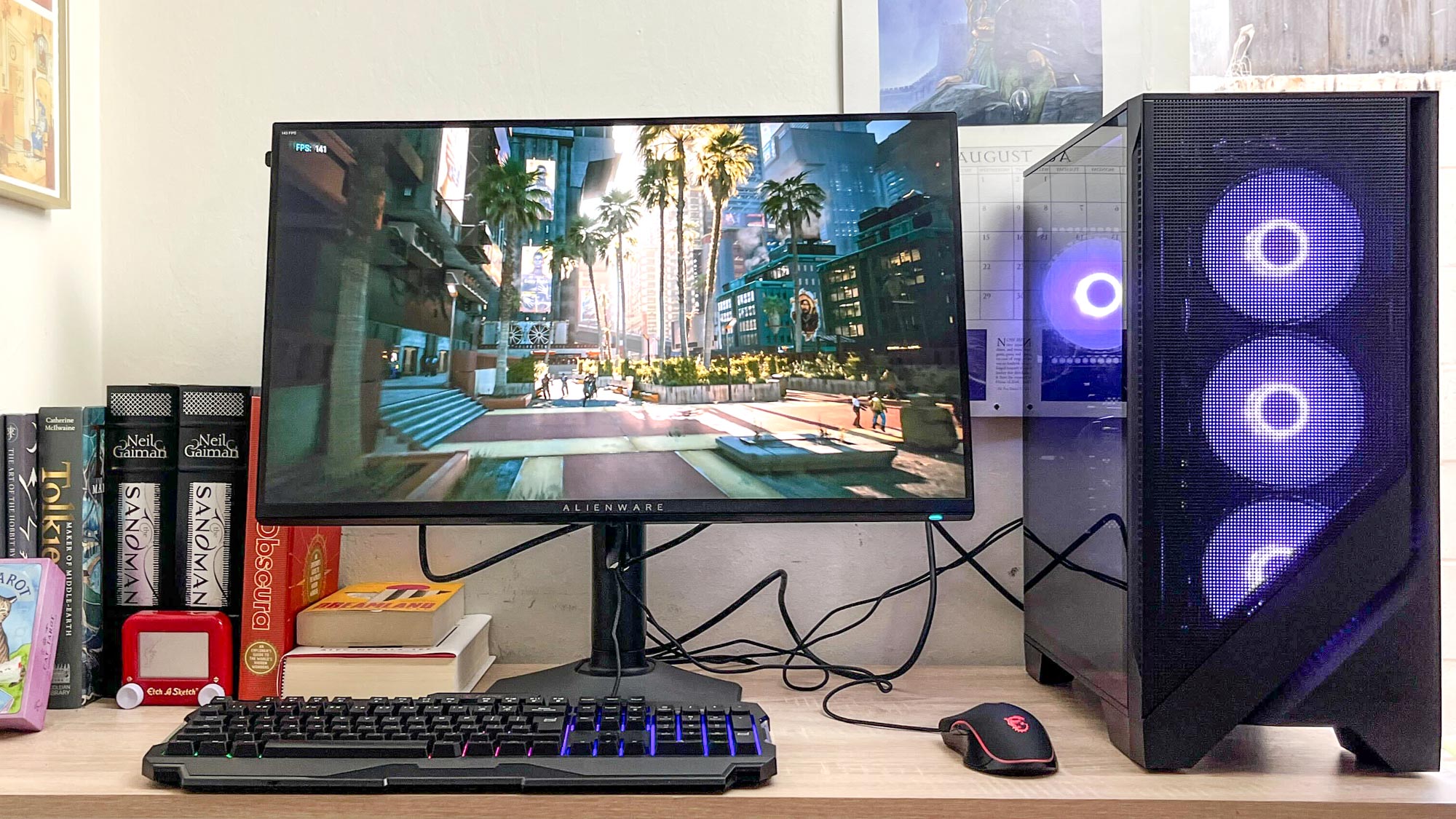

Specifications
Reasons to buy
Reasons to avoid
The Alienware 27 4K Dual Resolution Gaming Monitor is a mouthful of a name for a 27-inch display that does one very cool thing: flip between 4K 180Hz and 1080p 360Hz when you press a button.
This kind of feature isn't much use to most of us, but if you're a serious game player who wants to be able to cruise through your daily tasks in 4K and then drop down to 1080p when you really need 200-300 frames per second in a game, this is the display for you.
While it's not the first or best dual-resolution gaming monitor we've seen, this model is quite good, especially for its relatively budget-friendly $599 asking price. In my hands-on testing, I found it works well, too, with nice seamless transitions between display modes and a surprisingly bright and clear picture quality.
However, it doesn't have the lovely vivid picture quality or sharp contrasts of a mini-LED or OLED display, so you're not getting the best of the best. And frankly, if you don't think you'll need the option to switch down to 1080p resolution for faster refresh rates I think you can get a better gaming monitor for your needs for less.
But if you want a dual-resolution gaming monitor, this is the best you can buy for under $1,000.
See our full Alienware 27 4K Dual Resolution Gaming Monitor review.
How to choose the best gaming monitor
The criteria for picking a gaming monitor is a bit different from choosing the best monitors overall. Determining the best gaming monitor for your needs comes down to three major factors: resolution, refresh rate and price.
Resolution: How much resolution you need depends on how powerful your PC is. Extremely powerful machines can run games at 4K resolutions (3840 x 2160 pixels), which means you'll probably want to pony up for a more elaborate monitor. Cheaper machines pair better with 1080p monitors, while those in-between can run at quad-HD resolutions.
Refresh rate: Refresh rate is similar, in that more powerful machines will need monitors with higher refresh rates. While refresh rate and frames per second are not exactly the same thing, it's useful to think of them in the same terms when choosing a monitor. Is your PC powerful enough to get 60 frames per second during gameplay? 120 frames per second? More? The higher the refresh rate, the higher number of frames per second the monitor can support.
Price: Price is pretty self-explanatory. Just remember that more expensive monitors will be useful for longer periods of time. A good screen can last for a decade or more, and if you decide to buy or build a new machine in the future, you may not need to replace a monitor that's sufficiently advanced.
How we test gaming monitors
To test our best gaming monitors, we employ a colorimeter and benchmarking software to measure a monitor's color accuracy, contrast and brightness. A monitor's brightness refers to how many nits of luminosity it can output; its color accuracy (or Delta-E) measures how lifelike its colors are; its color gamut represents how great a variety of the spectrum it can display. We can also measure a monitor's latency, and try to push it to its limits in terms of game frame rates.
Qualitatively, we run each monitor through both productivity and gaming tests. You’re not going to switch monitors each time you need to open a word processor, watch a video or send an e-mail, so every monitor on this list must be sharp and responsive for everyday use. As far as gaming goes, we run each monitor through games in a variety of genres, including FPS, RTS, MOBA, RPG and MMO, in order to ensure that it doesn’t favor one genre at another’s expense.
Sign up to get the BEST of Tom's Guide direct to your inbox.
Get instant access to breaking news, the hottest reviews, great deals and helpful tips.

Darragh is Tom’s Guide’s Computing Editor and is fascinated by all things bizarre in tech. His work can be seen in Laptop Mag, Mashable, Android Police, Shortlist Dubai, Proton, theBit.nz, ReviewsFire and more. When he's not checking out the latest devices and all things computing, he can be found going for dreaded long runs, watching terrible shark movies and trying to find time to game
-
Computered This has some solid choices on it though I would disagree with two of them. The high end Acer ultra-wide has been plagued among consumers with quality control issues for both the Freesync and Gsync model. The monitors sent to reviewers are with more research starting to appear to be cherry picked which means Acer had some awareness of the issues. For the cost a certain level of quality control is expected. Hard to see how anyone can suggest them to consumers right now.Reply
As for the Freesync chose The Asus monitor is a good choice but my experience with both has shown the Benq XL2730Z delivers a better experience. -
narsos The link to amazon for the Best Over Gaming Monitor BENQ XL2420G links to the XL2420Z. A difference of no G-Sync and about $400 between the 2.Reply -
DFWallace At the 27" size reference point, IMHO, the Acer Predator XB271HU and the Asus PG279Q are the two best choices... WORD...Reply -
Ghork None of these are 16:10 the traditional computer widescreen format, unfortunately Console gaming made TV formats popular, but 16:9 is TERRIBLE for computers, there's too little vertical space/or if big enough it's too wide so you'll miss stuff at the sides for gaming. So all these monitors are basicly worse than 10 year old monitors in my book, wish someone would take note and actually make a 16:10 gaming high refresh rate monitorReply -
axlrose This is the first I've heard anything solid on the 4k 144hz front. Where is the Q3 info from? That's the monitor I'm waiting for.Reply -
javidali hi which monitor will b perfect for the xbox one x...would the x34 be worth it for dat?Reply -
Sam Hain Reply19837187 said:hi which monitor will b perfect for the xbox one x...would the x34 be worth it for dat?
The "X" is an HDR capable machine, therefore you'd want to invest your budget into an HDR capable display.. The only monitors at the moment (on the U.S. market that I know of) that purportedly support HDR are made by Samsung:
https://www.samsung.com/us/computing/monitors/gaming/s/_/n-10+11+hv22x+zq2jk/
All would be more cost-effective options to a 4K TV obviously BUT may not have built in speakers, which to be honest, most monitor audio is horrid to be polite. If you already own an audio solution, you're set... Otherwise, you'd need to invest in a soundbar, 2.1, surround system etc.
Option two: Nab a 4K 120Hz HDR TV within your budget with a screen-size that will work within your desired mounting-space/location for it.
